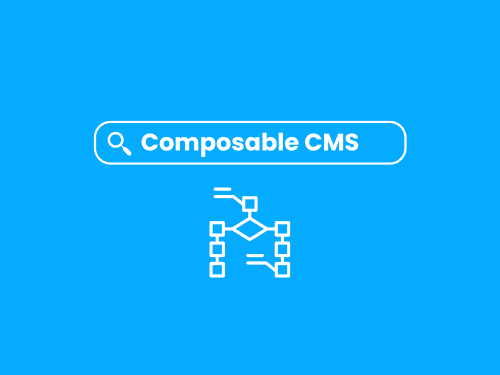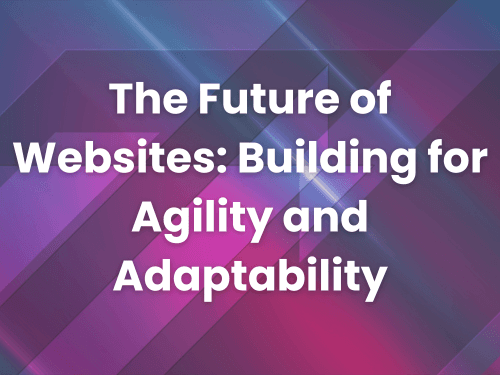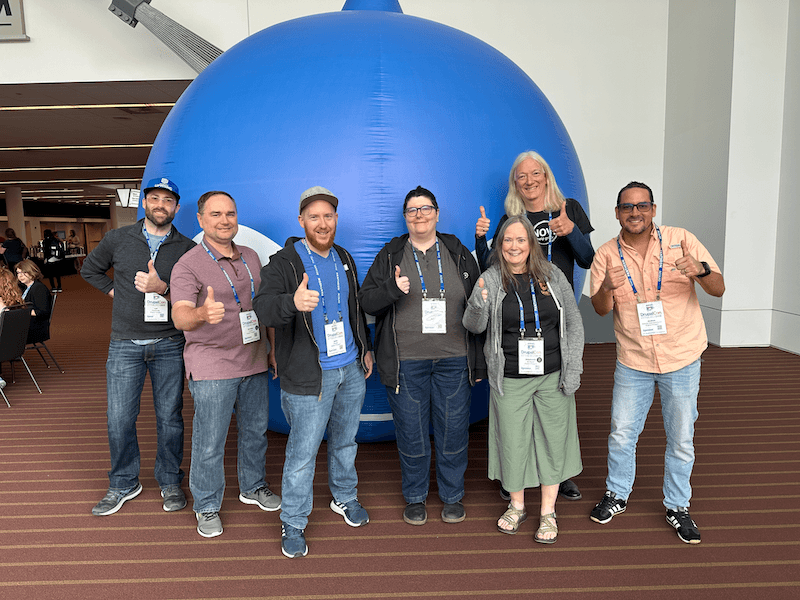Consumer preferences today shift at the blink of an eye, and businesses need to be agile and adaptive in their online presence. The traditional model of websites and content management systems (CMS) that rely on lengthy build cycles are no longer able to keep up with the demand for rapid changes and innovation. This is why the concept of a composable CMS has emerged as a game-changer, empowering marketers to accommodate their customers' changing needs with finesse and speed.
Organizations can no longer afford to wait for traditional 2-3 year build cycles to revamp their monolithic digital presence. The current landscape demands nimbleness, flexibility, and the ability to swiftly pivot as market dynamics change. Yet, many marketing teams find themselves constrained by outdated systems that hinder their efforts to adapt and stay competitive.
Enter the composable CMS – a dynamic approach to website architecture and content management that breaks down digital experiences into smaller, reusable components. By structuring experiences in this manner, teams can create and deliver content with remarkable efficiency and agility. This approach not only accelerates content creation but also enhances its quality and alignment with business goals.
Breaking Free from Rigidity: The Essence of Composable CMS
Composable CMSs represent the evolution of the traditional monolithic CMS into a more modular and flexible architecture. It is characterized by an application layer that thrives on composability, supported by robust module and plugin systems for website features and functionality. This architecture goes beyond the traditional content delivery model, enabling content to be consumed by both native theme layers and decoupled front-end presentation applications. This multi-layered composability results in web infrastructures that are designed for rapid scaling and peak performance.
Among the chief benefits that marketers experience when leveraging a composable CMS approach are:
- Enhanced Flexibility and Personalization: Composable CMSs empower marketing teams to create tailored experiences by leveraging modular components. This means that marketers can dynamically assemble content blocks to create custom pages, layouts, and user journeys, catering to each individual user's preferences. Personalization becomes a breeze, driving user engagement and loyalty.
- Faster Time-to-Market: The process of content creation and deployment becomes streamlined when using a composable CMS. Marketing teams can rapidly launch new campaigns, landing pages, or microsites without being hindered by lengthy development cycles. This agility ensures that businesses can capitalize on market opportunities promptly, delivering timely and relevant content.
- Seamless Integrations and Third-Party Services: By operating a composable CMS, you can seamlessly integrate with third-party services like marketing automation tools, analytics platforms, and e-commerce solutions. This flexibility enables marketing teams to combine different services effortlessly, enhancing the overall functionality and user experience of the website.
Examples of Composable CMSs to Consider
There are a variety of composable CMS platforms, both open source and paid, available that allow marketers to use this transformative approach to content management. Here are a few notable examples:
- WordPress: A household name in the CMS world, WordPress offers a range of plugins and integrations that facilitate composable content creation.
- Drupal: Known for its flexibility, Drupal's module system makes it a strong contender for building composable websites that cater to specific needs.
- Kontent.ai: With a focus on delivering content to any channel, Kontent.ai's headless CMS empowers marketers to create and distribute composable content seamlessly.
- Sanity.io: A fully decoupled, 100% composable headless CMS, Sanity allows customers to deliver content in customizable workspaces through powerful and intuitive API interfaces.
- Contentful: This AI-driven CMS orchestrates workflows across your content graph so you can get up and running quickly and deliver digital experiences fast. It also offers pre-built integrations with sites like Shopify GA4 to enhance systems.
- ContentStack: ContentStack is a fully automated composable DXP powered by a headless CMS platform enabling speed and agility in web integrations.
- Storyblok: Storyblok's visual composer makes composable content creation intuitive, allowing marketers to build engaging digital experiences.
Before diving head-first into a specific brand of CMS, it’s important to consider the fact that the composable CMS that best fits you depends on your needs and a variety of additional factors. Some of these factors include:
- What are your goals for your web presence? Consider the main purposes of your digital presence – are you launching an e-commerce site to drive sales, or is it more of a brand awareness and educational content approach aimed at lead-gen? The answer could affect which platform is best suited for those purposes.
- Technical Expertise: You should also consider who will be in charge of building, deploying and managing the composable CMS. Do you have technical experts in-house who will be able execute changes as needed, or will you be relying on an external agency? Would you prefer to be able to make changes and iterate on your own? In any case, the CMS you choose should align with your team’s skills.
- Business Maturity: The size of your business and the amount of content your business will churn out will greatly affect the platform you should use. Whether you’re an established enterprise or a new startup, the amount of content required for your website will dictate the complexity of the content on it, and platforms are stratified at various levels of content complexity.
- Budget: As mentioned, there are both open-source and paid options for composable CMSs, and the sweet spot for your business depends on both the needs mentioned above and the budget you have to update and maintain it. Keep in mind, that if you utilize an open-source composable CMS, it will still require a budget to maintain it.
- Future Growth and Scalability: Finally, one of the most important considerations for adopting a composable CMS is your expected growth as a business, since by nature the Composable CMS is about scaling and iterating content rather than building it and leaving it be. Make sure that you know the platform on which you build your Composable CMS is adaptable enough to meet your needs as they change.
The era of rigid, monolithic websites is fading away. Composable CMSs are paving the way for a new paradigm of digital marketing—one that embraces agility, personalization, scalability, and seamless integrations. By breaking content into reusable components and adopting an architecture built for speed and scale, businesses can stay ahead of the curve and deliver exceptional online experiences to their audiences. While the journey to a composable content approach might require investments in new tools and technologies, the potential benefits for marketers are undoubtedly substantial.
To learn more about building a composable CMS for your business, visit our blog: https://www.digitalpolygon.com/blog





